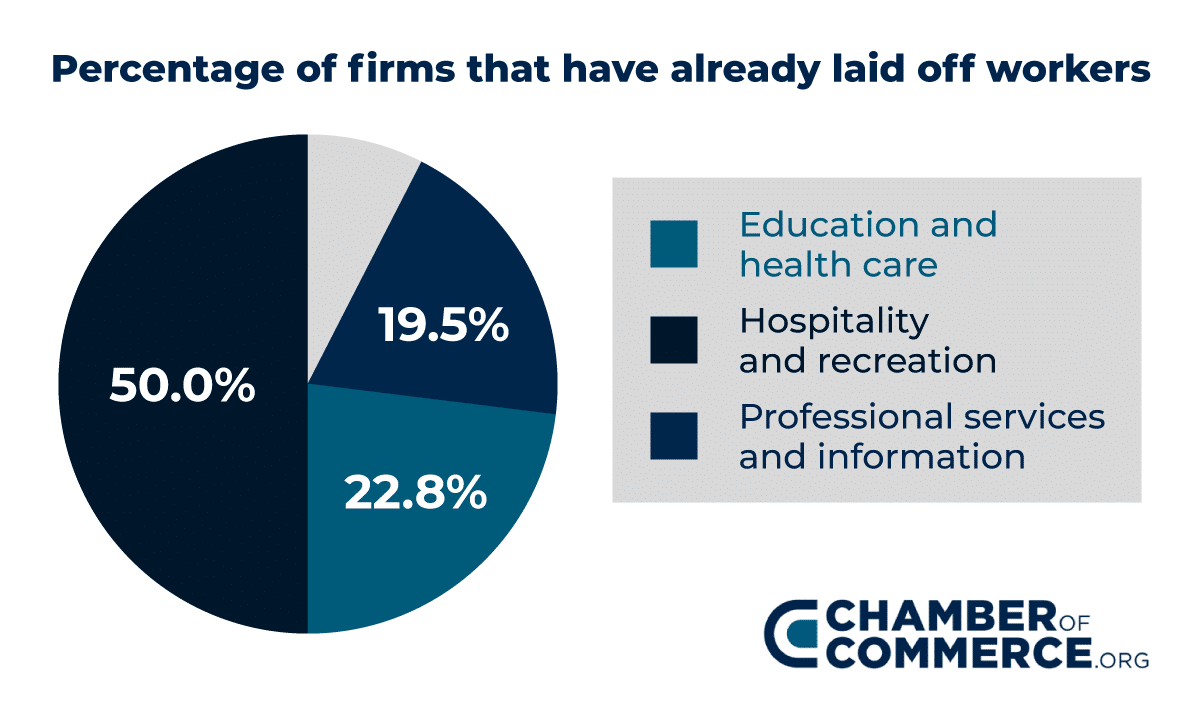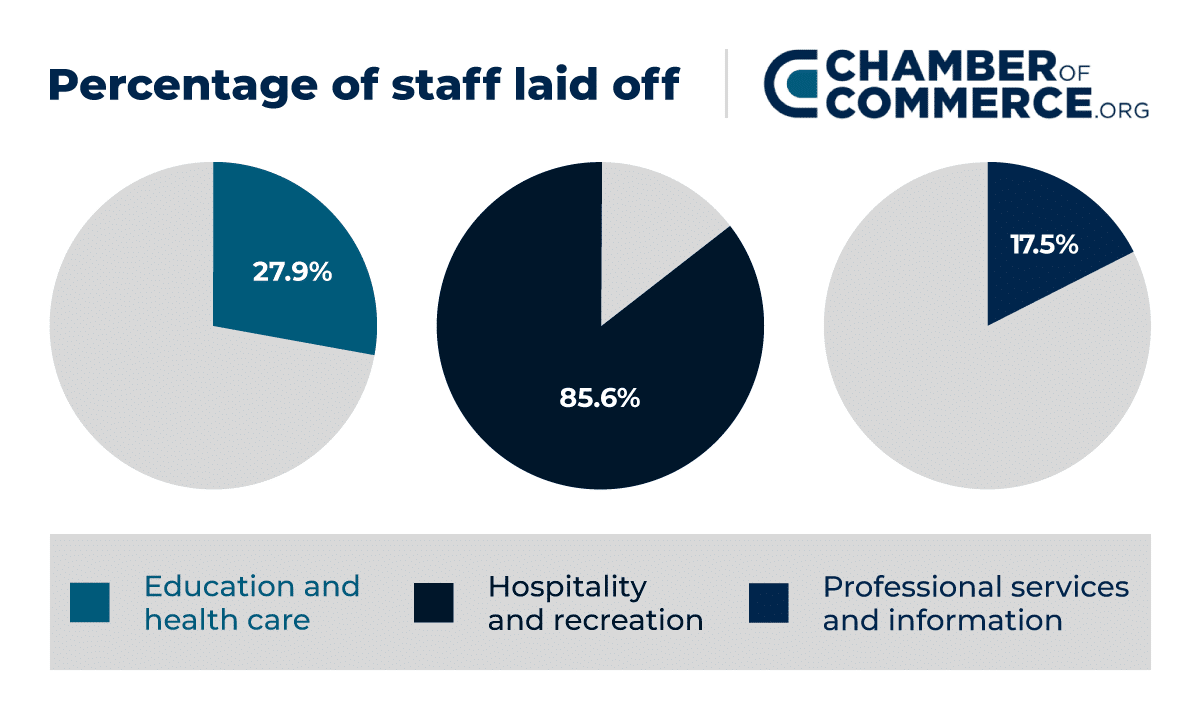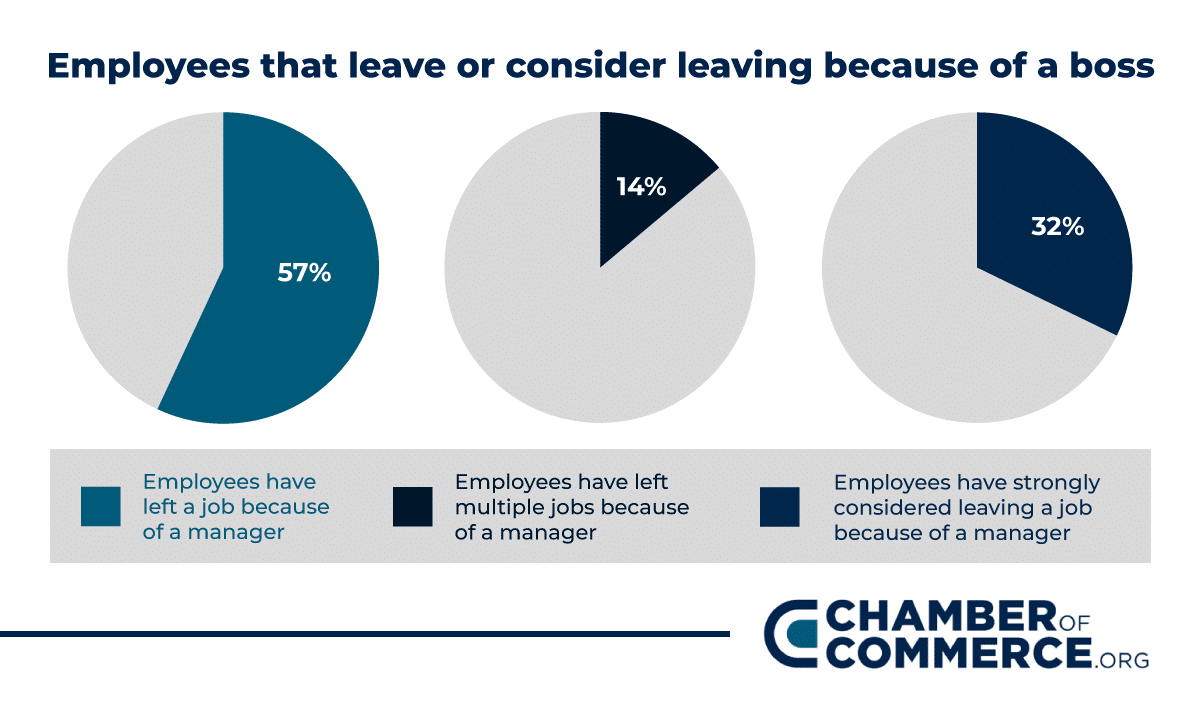Research shows a growing number of people are leaving their jobs at small businesses. Over the last ten years, the number of people who have walked out the door has climbed. In 2019, 42.1 million people left their job at a small business, according to the Bureau of Labor Statistics. And with the pandemic, employment numbers have only declined.
What’s behind the exodus of small business employees? There are a lot of factors at play. As you might expect, the pandemic does play a big role. Some people aren’t choosing to leave, they’re being forced to as small businesses struggle to find financial footing in an uncertain time.
Layoffs are a real concern, but there are both pandemic-related and non-pandemic-related reasons for high employee churn.
To better understand why people are leaving their jobs at small businesses, we started digging; trying to understand why employees are separating from their employer. Our results were a bit surprising. We found seven commons reasons for employees to leave, which include:
- The pandemic resulted in layoffs
- More people retired during the pandemic
- Women left their jobs to care for and educate children
- High-tax states are pushing people to move
- Employees leave in search of a more flexible schedule
- Bosses are often behind a decision to leave
- Employees are apt to leave without career advancement
We’ll explore the motivations behind each.
The pandemic resulted in layoffs
The unemployment level in the nation was 14.8% in April 2020, which is the highest level since 1948. In that same month, every state reached unemployment rates that were higher than those reached during the Great Depression, according to the Congressional Research Service. Of course, this data looks at employment as a whole, across businesses of all sizes.
However, when you drill down to small businesses, it still paints a bleak employment picture with data showing 18 million jobs at risk, according to the Kenan Institute. A look at the industries that employ the most people shows widespread layoffs, with anywhere from 17.5% to 85.6% of employees let out.
[Create GFX – To make this different from the original source, I only pulled data from the top three most-employed industries and suggest turning the percentages into small pie charts].
Layoffs in Top 3 Major Industries
| Industry | Percentage of firms that have already laid off workers | Percentage of staff laid off |
| Education and health care | 22.8% | 27.9% |
| Hospitality and recreation | 50.0% | 85.6% |
| Professional services and information | 19.5% | 17.5% |
Source: Kenan Institute


As the charts above show, layoffs took place in all of the three industries with the hospitality and recreation industry hit the hardest.
More people retired during the pandemic
A growing number of seniors have retired since the pandemic hit, research shows. In the third quarter of 2020, about 28.6 million Baby Boomers, who were born between 1946 and 1964, left the labor force due to retirement. That’s 3.2 million more Baby Boomers that retired in 2020 than did during the same time last year, according to Pew Research Center.
For some seniors, the choice to retire was voluntary. Perhaps they were planning to retire in a year or so and decided to retire early as a protective measure against COVID-19. For others, retirement wasn’t a choice; they were forced into early retirement by employers who lost revenue during the pandemic.
You might assume that seniors who weren’t ready to retire could find another job. However, finding another job as a senior is a challenge. Why? The job market often favors younger employees.
Employers tend to gravitate towards younger employees because of their fresh attitude, willingness to learn something new, and lower labor costs. Plus, many seniors face medical problems that could keep them from returning to work. From mobility issues to a condition that requires frequent visits to a doctor, many seniors have roadblocks to employment.
Women left their jobs to care for and educate children
Another pandemic-caused reason for people leaving a job at a small business is to provide care for family members. More specifically, women have left jobs by the millions to educate and care for their children during closures, lockdowns, quarantines.
An astounding 2.6 million women were forced to leave their jobs, dropping the share of women in the workforce back to 1988 levels, according to NPR.
Why are women leaving their jobs to care for children as opposed to men? The biggest reason is the gender pay gap. Despite efforts to close the pay gap, men with a college degree earn an average of $39.99 an hour, compared to women with a degree who earn an average of $29.55 an hour. For many families, the man makes more money, so financially a family must pick the higher wage.
Childcare is another factor. With schools closed and after-school activities shuttered, children have no place to go. In response, families need to find a solution, which research shows is more frequently the mother than the father.
On average, women have added an additional three hours of care to their schedule every day. Those hours are spent doing everything from managing virtual education and preparing meals to care for vulnerable adults in the family.
Projections show women won’t return to pre-pandemic work levels until 2024.
High-tax states are pushing people to move
It’s not surprising to see more Americans trying to hang on to their hard-earned money, especially in the wake of a pandemic. As a result, people left high-tax states in 2020. Research shows residents left New Jersey, Illinois, and New York in droves to avoid paying high taxes.
The rise in remote work gave many people the ability to move without changing jobs as well.
Where did they go? Many opted for one of the seven states that don’t levy taxes on personal income, which includes: Alaska, Florida, Nevada, South Dakota, Texas, Washington, and Wyoming.
New Hampshire and Tennessee don’t tax wages either, but they do tax interest and dividends.
Employees want a flexible schedule
Even before the pandemic, a growing number of employees wanted a more flexible schedule. Sixty-two percent of workers have considered handing in their resignation to find more flexible employment.
The pandemic may have created a more favorable attitude toward this concept. In many states, companies were asked to allow employees to work remotely as much as possible to slow the spread of COVID-19. As a result, organizations that wouldn’t have considered remote work were now forced to try it – and most had a successful experience.
Research shows 83% of companies say the shift to remote work was successful, according to a survey from PwC. Now, less than one in five employers say they plan to return to the office as it was pre-pandemic.
What kind of flexible schedule would employees consider ideal? Employees would like to work from home three days a week and go to the office two days. Employers see it a little differently though and would prefer to have employees in the office three days a week and at home two days.
Regardless of the schedule, experts say there will be fewer employees leaving small businesses in the future as the concept of remote work becomes more commonplace.
Bosses are often behind a decision to leave
There are reasons to leave a small business that don’t have anything to do with the pandemic. You’ve probably heard the phrase: People don’t quit a job, they quit a boss. Research shows this is more true than ever. When an employee and a supervisor are at odds, it often leads to unemployment for the employee. It likely happens more often than you think. Take a look at the research below from the Frontline Leader Project.
Employees that leave or consider leaving because of a boss
- 57% of employees have left a job because of a manager
- 14% of employees have left multiple jobs because of a manager
- 32% of employees have strongly considered leaving a job because of a manager
Source: Frontline Leader Project

What is it about the employee/supervisor relationship that pushes employees out? There are several factors. One of the biggest issues is that employees don’t feel as though their supervisor gives them enough time to complete tasks or as higher expectations than can be met within a certain timeframe.
Employees who feel underappreciated or who aren’t given ownership of tasks are often eager to leave as well. While some supervisors might not believe it, many employees want the responsibility but they’d like to accomplish a task in their way as opposed to being micromanaged.
Speaking of under-appreciation, studies have shown that businesses (and bosses) that are willing to invest in their associates ultimately improve the customer experience – and ultimately, their bottom line. Effective associate retention strategies for bosses and companies include remuneration, of course, along with the other points mentioned in this article. See the above-mentioned post for even more employee retention tactics.
Nevertheless, some employees are willing to walk out the door when they’re passed over for a promotion. It’s important that a supervisor possess the skills to speak with employees about position shifts and have difficult conversations about performance in order to maintain a cohesive work environment. However, even the best communication might not be enough to curb an employee’s urge to leave if they feel they were wronged.
Employees are apt to leave without career advancement
At some companies, employee turnover is high because of a lack of career advancement. If an employee doesn’t see a way to grow within a company, he or she will eventually decide to find a company that does.
Eighty-two percent of employees have quit because of a lack of progression. In most cases, progression means a promotion with a better title, new responsibilities, and higher pay.
However, retaining talent isn’t just about handing someone a corner office and more cash, it’s about recognizing top talent and being willing to create a customized advancement path for that person. For many companies, this is a completely different way of thinking. Most companies have a job and find a person to fill it. Companies need to flip that around and be willing to create a job around an individual they want to keep.
It all starts by recognizing an employee’s talents and providing tasks that meet their strengths. Managers should provide opportunities that show the employee that the company is making an investment in their future like offering more training or giving the employee the ability to lead a small team.
